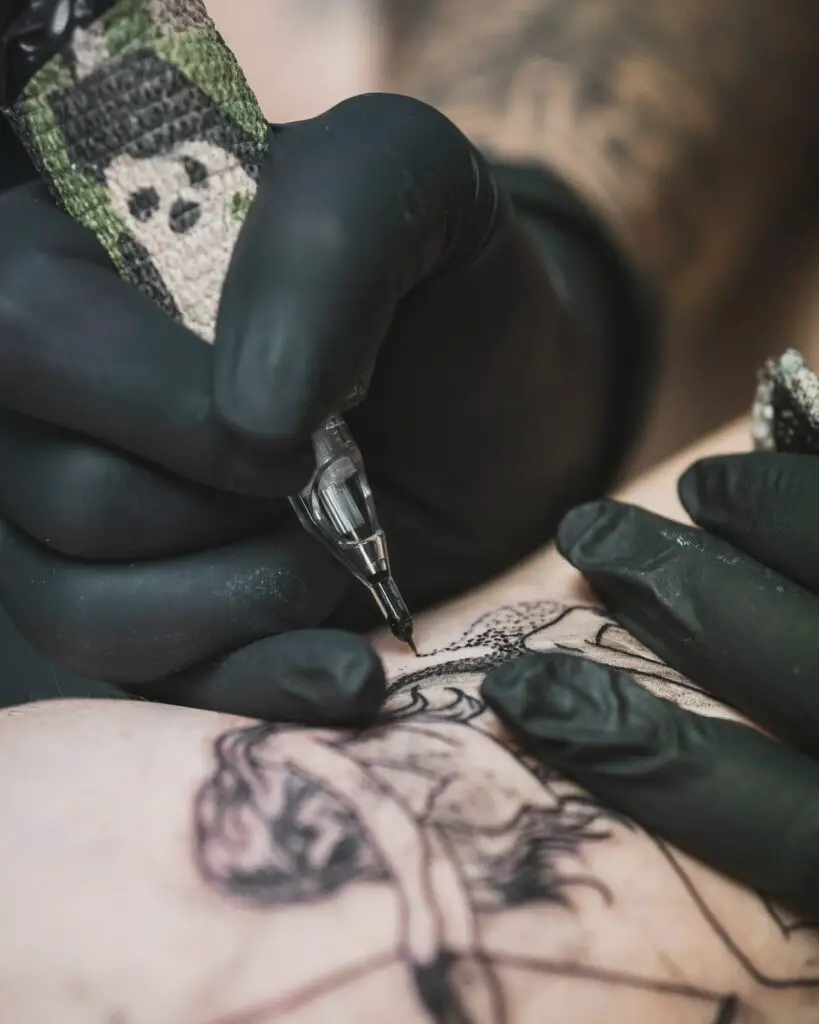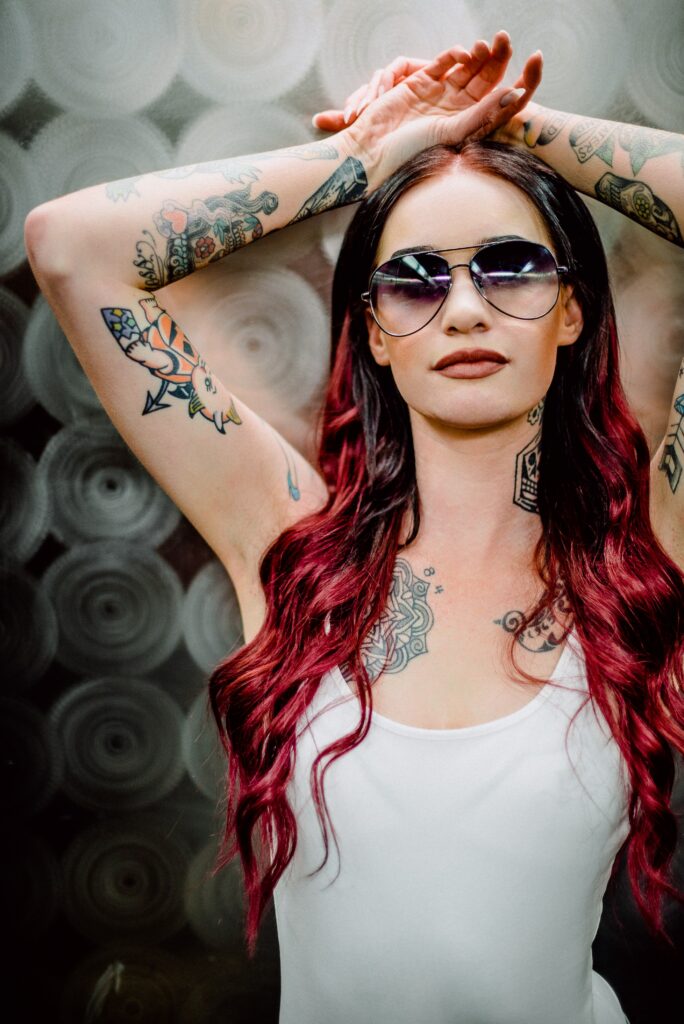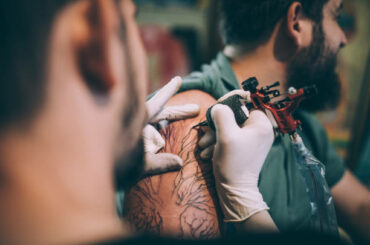Why Are People Against Tattoos? In many corners of the world, from the intricate tribal markings of indigenous communities to the chic urban studios of metropolitan cities, the art of tattooing has painted a vivid tapestry of human expression. As ancient as it is vibrant, this practice has etched its way through centuries, bearing witness to human tales of identity, rebellion, spirituality, and artistry. Fast forward to today, and tattoos have surged from the shadows of societal fringes to the mainstream limelight, with more people donning ink than ever before. However, despite its rising popularity and increasing acceptance, a lingering question remains: Why are people against tattoos? In this exploration, we delve into the myriad reasons that underpin such reservations.
Contents
Historical and Cultural Context
Tattoos, in their myriad forms, have graced human skin for millennia, tracing back to ancient civilizations across the globe. From the intricate geometric designs found on Ötzi the Iceman, a 5,000-year-old mummified body discovered in the Alps, to the elaborate Polynesian tribal markings that symbolize rites of passage, tattoos have served as profound markers of identity, status, and spirituality in various cultures.
In ancient Egypt, tattoos were found on female mummies, suggesting a possible role in fertility or religious rituals. Meanwhile, in Japan, tattoos initially started as a form of expressing religious and cultural beliefs but later evolved into symbols for criminality before undergoing another transformation into the revered art form it is today.
As societies evolved and intermingled, so did their perceptions of tattoos. The once-revered practice faced periods of stigmatization, especially in the West. By the late 19th and early 20th centuries, tattoos in Western societies were predominantly associated with sailors, soldiers, and marginalized groups. However, the latter half of the 20th century saw a resurgence in the popularity of tattoos, with them evolving from subcultural symbols to mainstream forms of personal expression.
This evolution of societal views on tattoos reflects deeper shifts in cultural values, norms, and aesthetics. While many embrace tattoos as a form of self-expression and art, the echoes of historical reservations persist in certain quarters, setting the stage for the diverse opinions on tattoos that we witness today.
Religious Beliefs So, Why Are People Against Tattoos?
Throughout history, religious tenets have wielded significant influence over personal and societal choices, and the realm of body modifications like tattoos is no exception. Many religious scriptures and teachings address the topic, often presenting diverse viewpoints that have shaped believers’ perceptions and actions.

A prominent reference in the Abrahamic faiths, particularly within Christianity, is Leviticus 19:28 from the Bible: “You shall not make any cuts on your body for the dead or tattoo yourselves.” This Old Testament injunction, while open to varying interpretations, has been a cornerstone for many Christian denominations that advise against the practice of tattooing.
Similarly, while the Qur’an does not explicitly mention tattoos, several Hadiths (sayings and actions of the Prophet Muhammad) in Islam are understood to discourage body modifications. This perspective has resulted in tattoos being frowned upon in many conservative Muslim communities. However, interpretations vary, and some Muslim cultures historically practiced tattooing as a form of adornment and protection.
In contrast, Hinduism celebrates body art in various forms, such as henna (mehndi) applications, but permanent tattoos, especially of deities or sacred symbols, can be contentious. They demand respect and proper placement, lest they be deemed disrespectful.
Buddhism offers a more complex viewpoint. While there are no strict prohibitions against tattoos, it’s crucial to approach the act with the right intention. Interestingly, sacred Sak Yant tattoos, performed by Buddhist monks in countries like Thailand, are believed to imbue the wearer with protection and spiritual blessings.
The divergence in religious views on tattoos showcases the intricate interplay of doctrine, tradition, and cultural evolution. As with many religious teachings, interpretation plays a pivotal role, leading to a spectrum of beliefs and practices even within a single faith. These religious perspectives provide a foundational understanding of why tattoos might be embraced by some, yet viewed with skepticism or outright disapproval by others.
Professional and Social Stigma
In the evolving tapestry of global societies, the intersection of tattoos and societal acceptance has long been a topic of debate. While many cultures have embraced the art form as a personal expression, certain professional and social environments continue to project reservations about tattoos, and this dichotomy has profound implications for individuals bearing ink.
In the realm of professionalism, tattoos have historically been seen as taboo in many workplaces, especially in more conservative sectors. Professions such as law, banking, and healthcare have often emphasized a ‘clean-cut’ appearance, believing that tattoos might detract from the perception of credibility or professionalism. While many companies have relaxed their dress codes and appearance guidelines in recent years, acknowledging the changing societal norms, some still maintain stringent policies against visible tattoos, especially when employees are in customer-facing roles. The underlying belief often rests on the idea that tattoos might alienate certain clientele or be perceived as unprofessional.

Beyond the confines of the workplace, the social perceptions surrounding tattoos can be even more multifaceted. In certain circles, tattoos might be linked to stereotypes of rebelliousness, non-conformity, or even criminality. Such stereotypes, albeit outdated and often unfounded, can lead to prejudices against individuals with tattoos. They might be viewed as less trustworthy, more prone to risky behavior, or even as having made impulsive life choices.
However, it’s crucial to note the shifting tide. As tattoos gain mainstream acceptance, especially among younger generations, these stigmas are gradually eroding. Celebrities, influencers, and public figures proudly display their ink, reshaping societal perceptions. Yet, the remnants of these stigmas persist in certain quarters, and their impact is felt by many who choose to express themselves through the art of tattooing.
Health and Safety Concerns
The intricate dance of needle and ink on skin, while a powerful medium of expression, is not without its hazards. As with any procedure that breaks the skin’s barrier, tattooing brings with it a set of health and safety concerns that, if not addressed properly, can lead to adverse outcomes.
At the forefront of risks associated with tattooing are infections. Unsterilized equipment can introduce pathogens, leading to bacterial infections at the tattoo site. The aftermath can range from mild skin irritations to severe conditions requiring medical intervention. Infections can manifest as swelling, pus, or prolonged redness around the tattoo. In extreme cases, if the equipment is contaminated with blood from a previous customer, there’s a potential risk of transmitting blood-borne diseases, including hepatitis B, hepatitis C, and even HIV.
Beyond infections, allergic reactions are another concern. Some individuals might react to certain tattoo inks, especially colored ones. These reactions can appear immediately after getting the tattoo or even years later, presenting as itchy rashes or bumps. In some cases, exposure to sunlight can exacerbate these allergic reactions.
Keloids, which are overgrowths of scar tissue, can also develop at the tattoo site, especially in individuals predisposed to keloid formation. Additionally, there’s the potential for MRI complications. Some tattoo inks can interfere with the quality of the image, and in rare cases, tattoos can cause swelling or burning during an MRI.
Underlining all these concerns is the absolute importance of hygiene and professional practices. A reputable tattoo artist will prioritize cleanliness, using sterilized equipment, fresh ink, and disposable gloves. The studio itself should adhere to strict hygiene standards, resembling a medical facility in its cleanliness. Furthermore, professional tattoo artists usually undergo training in preventing infections and recognizing potential health issues related to tattooing.
It’s also the responsibility of the individual to ensure aftercare, keeping the tattoo clean and moisturized and avoiding exposure to potential contaminants as the skin heals.
Permanence and the Fear of Regret
Tattoos, by their very essence, are a statement of permanence. Unlike other forms of self-expression that can be changed or removed with relative ease, tattoos are etched onto the skin with an enduring intent. This near-permanent nature presents both an allure and a daunting challenge, as the choices made today will likely remain visible for decades.

Understanding the near-permanent nature of tattoos requires acknowledging the process itself. Tattooing involves injecting ink into the dermis, the second layer of skin. Because the cells of the dermis are more stable than those of the outer layer, the tattoo remains mostly intact over time, with minimal fading. While this ensures the design’s longevity, it also means that any changes in preference, circumstances, or personal beliefs can lead to a mismatch between the individual and their tattooed expression.
The weight of this permanence becomes evident when we explore anecdotes and statistics surrounding tattoo regrets. A survey conducted by the British Dermatological Association found that a third of people who get tattoos end up regretting it. Common reasons include impulsive decisions, the tattoo’s association with a past phase or relationship, or dissatisfaction with the quality of the artwork.
Tattoo removal, although possible, is neither easy nor guaranteed to be entirely effective. Laser tattoo removal, the most common method, involves breaking down the tattoo ink with laser beams, allowing the body to eliminate it gradually. This process can be painful, expensive, and often requires multiple sessions over a prolonged period. Even after all this effort, complete removal isn’t always guaranteed, and scarring can occur.
Beyond the logistics of removal, there are emotional and psychological dimensions to consider. The feeling of regret can weigh heavily, leading to self-consciousness, embarrassment, or even feelings of shame. An individual’s once-prized artwork can become a source of discomfort, reminding them of past choices they no longer align with.
Aesthetic Preferences
Art, in all its myriad forms, has always been a reflection of personal taste and cultural norms. What’s deemed captivating to one might be lackluster or even distasteful to another. Tattoos, as a form of body art, are no exception to this rule of subjectivity. The aesthetic preferences surrounding tattoos shed light on deeply personal and societal beliefs about beauty and adornment.
At the heart of this discussion is the subjective nature of beauty. From the grand canvases of Renaissance art to modern abstract sculptures, beauty has always been in the eye of the beholder. Similarly, the designs, patterns, and placements of tattoos are chosen based on individual tastes, cultural influences, and personal significance. While one might view a tattoo as a masterpiece—marrying color, design, and personal meaning—another might see it as dissonant or out of place.
Intertwined with these individual tastes is the broader societal narrative. Cultural norms and traditional beliefs play a substantial role in shaping views on aesthetics. For instance, in societies that venerate clear, unmarked skin as the pinnacle of beauty, tattoos might be seen as blemishes or distractions. This leads to the deeply entrenched belief that tattoos might mar natural beauty. The idea is that the human body, in its unaltered state, is a canvas of perfection, and tattoos, regardless of their design, disrupt this natural elegance.
Furthermore, aesthetic reservations might also stem from concerns about the aging process. As skin ages, it loses elasticity, leading to sagging and wrinkling. There’s a belief that tattoos, especially intricate designs or those placed on certain body parts, might not age gracefully, potentially warping or fading in ways that detract from their original appeal.
Conclusion
As we navigate the intricate landscape of tattoos, it’s evident that the reasons behind their opposition are as varied as the designs inked on the skin. From deeply rooted religious beliefs and cultural traditions to professional reservations and personal aesthetic preferences, the reservations surrounding tattoos are a tapestry of individual and societal perspectives.
Yet, it’s noteworthy that we live in an era of change, where tattoos are increasingly shedding their past stigmas and finding acceptance in broader circles. Modern times herald a shift in perceptions, with tattoos not only becoming mainstream but also celebrated as unique expressions of identity, art, and personal narratives. However, as with any form of personal expression, it’s paramount to remember the sanctity of individual choice. Whether one chooses to wear their stories on their skin or prefers the unmarked canvas of their body, these choices are deeply personal. In a world that’s ever-evolving in its views and norms, one principle remains timeless: the respect for personal choices, free from judgment and prejudice, regardless of societal views.





